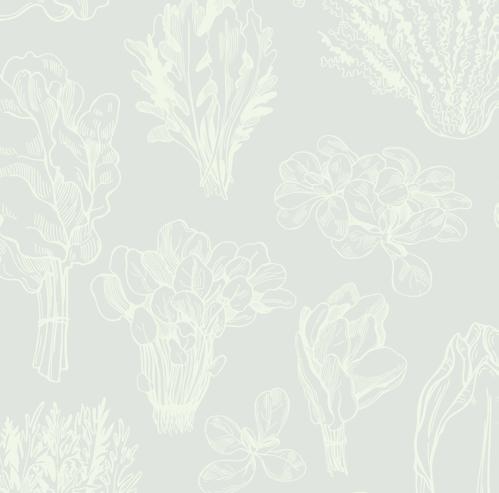
4 minute read
Lettuce, Before and After Solstice
Lełłuce, Before and Afłer Solstice
BY ARI LEVAUX
In many parts of the country the fall gardening season has begun. It’s time to sow your cold-loving crops like lettuce, spinach, beets, broccoli, mustard, cabbage, collards, carrots, kale and radishes, which can live well into winter. So if you’re willing to cover your greens with blankets and even build cold frames around them, you can coax a four-season harvest out of most planting zones. For more details on four season farming, consult the books of Eliot Coleman, of Four Season Farm in Maine, who eats local salad all year long and has written several books, including Four Season Harvest. And if you think you want to give it a shot, by all means plant now and read later! For newbie gardeners who may or may not want to try the winter gardening thing, a fall garden is a final shot at redemption. If your corn isn’t going to be knee high by the 4th of July, or your tomatoes will still be green when the frost hits, or if you haven’t even gotten around to digging up your garden, or you’re otherwise behind the ball, you might be ready to try again this fall. Starting now, I think I mentioned?

For experienced gardeners, planting the fall garden is a second spring’s worth of work, with all of the excitement that goes with it. Yes, it’s another garden chore to add to the weeding, watering, and harvesting of summer. But this is also the beginning of a whole new, cold weather garden that could be babied long after the winter solstice, and into the lengthening days. It’s cause for celebration.

The reason to wait until summer solstice has passed before planting winter greens is that the pre-solstice lengthening days can cause many leafy plants to bolt, which is something like when a human hits puberty. Changes happen. Irreversible changes, not all of them good. Changes in size, shape and flavor. The plant essentially becomes a long, central flowering stalk, and the leaves get pointy and develop extra-bitter flavor. Now that solstice has passed, you can sow your fall greens, either by direct seed or by planting little starts, without risk of them bolting. Every seven years, the summer solstice falls on Father’s Day, and both days make me think of lettuce. Solstice, of course, because it divides the spring and fall seasons of lettuce, and Father’s Day because my dad used to make the most amazing lettuce salad. We would go into a meditative state as he prepared it, patting down each leaf with a paper towel. He’d store leftover washed leaves wrapped in paper towels too. He’d serve his salad in these beautiful wooden bowls. It was super garlicky and everybody loved it. It’s perfect as a salad and also quite handy as a condiment of sorts. If you happen to be chewing a glorious morsel of food, perhaps fatty, perhaps meaty, a bite of marinated onions, lettuce and tomato can, and usually does, add to the experience.






Photo by Ari LeVaux.
Dad’s Salad

Photo by Ari LeVaux.


This is the salad I grew up eating, and the ultimate side salad.

Serves 2-4, depending on one’s salad intake
• 1 head romaine lettuce, washed and chopped • 1/2 a medium onion, minced • 1 clove of garlic, minced or pressed • 1 teaspoon salt • 2 tomatoes, sliced for salad • Olives and feta to taste • For the dressing • 1/4 cup cider vinegar • 1/4 cup balsamic vinegar • 3/4 cup olive oil

Toss the chopped lettuce, tomatoes and onions with the garlic and salt. Let sit for 20 minutes.

Mix the dressing vigorously and dress, tossing as lightly as possible. Garnish with olives and feta.
Ari LeVaux has written about food for The Atlantic Online, Outside Online and Alternet.












